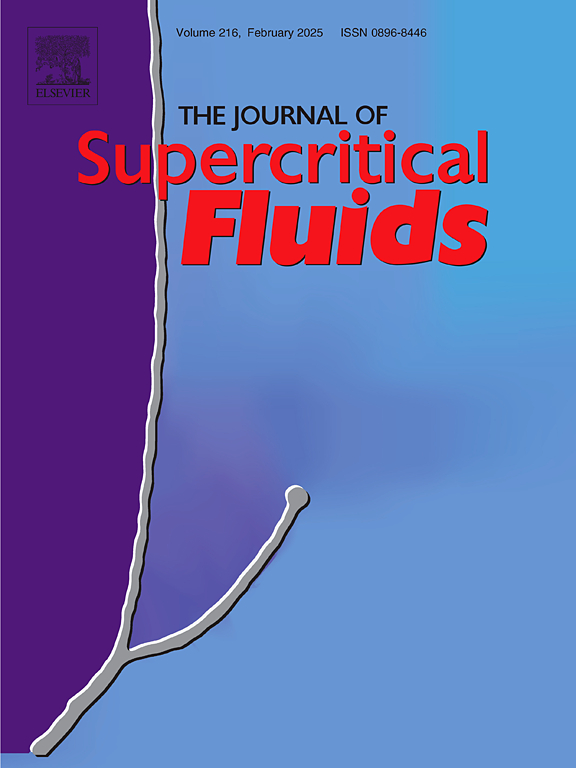超临界二氧化碳动力循环中合金腐蚀与防护研究综述:从腐蚀模拟、动态模拟到实验研究的角度
IF 4.4
3区 工程技术
Q2 CHEMISTRY, PHYSICAL
引用次数: 0
摘要
耐热材料的渗碳和耐腐蚀性能对提高超临界CO2可再生能源发电系统的安全性至关重要。为了解决耐热材料与超临界CO2的相容性问题,本文重点介绍了材料的选择、腐蚀失效机制和表面强化方法,包括实验表征和模拟计算。耐热材料的耐蚀性主要取决于其固有性能,特别是Cr含量。应力加载加速了耐热材料的离子扩散和渗碳速率。虽然杂质气体加速了腐蚀速率,但温度仍然是控制离子扩散动力学的主要因素。通过表面改性预形成保护氧化层,可显著提高耐蚀性。连续致密的Cr2O3、Al2O3和SiO2氧化膜阻碍了离子扩散,显著降低了耐热材料的渗碳和腐蚀速率。然而,单独的腐蚀测试提供了有限的机理见解,而计算模拟提供了对这些材料中气体吸附和初始氧化行为的有价值的理解。机器学习可以减少测试设备、环境和操作的影响,提高高温腐蚀测试结果的系统性和普适性。未来的研究重点应放在变超临界CO2载荷条件下的高温腐蚀和腐蚀疲劳的实验与模拟上。本文章由计算机程序翻译,如有差异,请以英文原文为准。
A review of corrosion and protection of alloys in supercritical carbon dioxide power cycles: From the perspectives of corrosion simulation, dynamic simulation to experimental research
The carburization and corrosion resistance of heat-resistant materials are crucial for enhancing the safety of supercritical CO2 renewable energy power system. Addressing the compatibility issues between heat-resistant materials and supercritical CO2, this review focuses on material selection, corrosion failure mechanisms, and surface strengthening methods, encompassing both experimental characterization and simulation calculations. The corrosion resistance of heat-resistant materials is predominantly governed by their intrinsic properties, particularly the Cr content. Stress loading aggravates the ion diffusion and carburization rates of heat-resistant materials. Although impurity gases accelerate corrosion rates, temperature remains the primary factor controlling ionic diffusion kinetics. Pre-forming protective oxide layers through surface modification can significantly enhance corrosion resistance. The continuous and dense Cr2O3, Al2O3 and SiO2 oxide films hinder the ion diffusion and significantly reduce the carburization and corrosion rates of heat-resistant materials. However, corrosion testing alone provides limited mechanistic insights, whereas computational simulations offer valuable understanding of gas adsorption and initial oxidation behavior in these materials. Machine learning can reduce the influence of test equipment, environment, and operation, improving the systematic and universal applicability of high-temperature corrosion test results. Future research should focus on conducting experiments and simulations of high-temperature corrosion and corrosion fatigue under variable supercritical CO2 load conditions.
求助全文
通过发布文献求助,成功后即可免费获取论文全文。
去求助
来源期刊

Journal of Supercritical Fluids
工程技术-工程:化工
CiteScore
7.60
自引率
10.30%
发文量
236
审稿时长
56 days
期刊介绍:
The Journal of Supercritical Fluids is an international journal devoted to the fundamental and applied aspects of supercritical fluids and processes. Its aim is to provide a focused platform for academic and industrial researchers to report their findings and to have ready access to the advances in this rapidly growing field. Its coverage is multidisciplinary and includes both basic and applied topics.
Thermodynamics and phase equilibria, reaction kinetics and rate processes, thermal and transport properties, and all topics related to processing such as separations (extraction, fractionation, purification, chromatography) nucleation and impregnation are within the scope. Accounts of specific engineering applications such as those encountered in food, fuel, natural products, minerals, pharmaceuticals and polymer industries are included. Topics related to high pressure equipment design, analytical techniques, sensors, and process control methodologies are also within the scope of the journal.
 求助内容:
求助内容: 应助结果提醒方式:
应助结果提醒方式:


